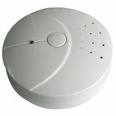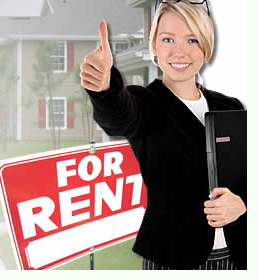Posted by Teresa on June 30, 2009 under Landlord and Tenant FAQs, Landlord Tips | 
 Every year, carbon monoxide poisoning kills 500 people.* Most could have been saved with a properly working carbon monoxide detector. If you are a landlord, your state may require carbon monoxide detectors to be installed and maintained in your rental units. But keeping your tenants safe is the right thing to do, whether or not you are required by law to install detectors.
Every year, carbon monoxide poisoning kills 500 people.* Most could have been saved with a properly working carbon monoxide detector. If you are a landlord, your state may require carbon monoxide detectors to be installed and maintained in your rental units. But keeping your tenants safe is the right thing to do, whether or not you are required by law to install detectors.
What is carbon monoxide? Carbon monoxide (CO) is a toxic gas produced by incomplete combustion of fossil fuels: oil, natural gas, wood, coal, and gasoline. In homes, the major sources of CO are fossil fuel burning furnaces, boilers, water heaters and fireplaces.
How can you detect carbon monoxide? This is the problem. You can’t. Carbon monoxide is odorless and tasteless. It is colorless, and unlike other dangerous emissions, CO does not irritate the skin, eyes, or nose.
Is carbon monoxide dangerous? Yes! It is highly toxic, and CO poisoning can be fatal.
What are the warning signs of CO poisoning? Headaches, dizziness, tiredness, and nausea. These symptoms are often mistaken for the flu.
What should one do if CO poisoning is suspected? Open all windows, call the Fire Department and remove all people and animals from the home.
What precautions should a landlord take?
1. Have furnaces, fireplaces, chimneys, and venting systems inspected annually.
2. Properly install and periodically inspect CO detectors. All detectors have test buttons.
3. Replace batteries in battery-powered detectors. twice a year—when clocks are changed for daylight savings time.
4. Regularly check all gas-fired appliances for leaks.
5. Instruct your tenants to notify you immediately if they detect any odors that indicate leaks.
6. Never allow tenants to use the range or oven for heat or to cook with charcoal grills inside the home or garage.
7. Never paint over detectors.
8. Replace detectors when recommended by the manufacturer. Keep instruction manuals and record the date purchased and installed. Record replacement dates in your annual inspection/maintenance logs.
 What types of carbon monoxide detectors are available? Some detectors run on batteries, allowing them to be placed wherever needed. Others are hard-wired with battery backups, and the third type plug into power outlets. Some have talking alarms, while others have digital displays.
What types of carbon monoxide detectors are available? Some detectors run on batteries, allowing them to be placed wherever needed. Others are hard-wired with battery backups, and the third type plug into power outlets. Some have talking alarms, while others have digital displays.
Where are CO detectors installed? CO detectors should be placed five feet or more above the floor, because CO is lighter than air. They may go on the ceiling, as well. CO detectors should not be installed near a fireplace or gas-fired appliance, such as a water heater. Each floor should have at least one CO detector, ideally near sleeping areas.
Landlords are responsible for keeping their rental units habitable and safe. One easy way to do so, which may be required in your state, is to install and properly maintain carbon monoxide detectors in all your rental properties!
*Source: Journal of the American Medical Association, Vol. 299, No. 9.
For more landlord resources, including forms and information on
tenant screening, turn to
E-Renter.com. You’ll know that you have the best possible tenants when you
prescreen tenants.
Posted by Teresa on June 24, 2009 under Landlord Tips | 
You purchased your rental properties in order to make a profit, right? And, you’re protecting those invested dollars by keeping your properties in great condition. But to leverage the properties for maximum profit, you need to upgrade periodically, as well.
When considering upgrades to your rental units, don’t look at them as expenses; upgrades can potentially earn you several times their expense in profits. Just be sure to compare the cost of the upgrade with the amount of increased rent to see how long that will take.
If you’re considering upgrades, here are some guidelines to help you increase the value—and therefore, the monthly rent—of your investment property:
 1. Maximize the view: If you can add a window to reveal a mountain, water, park, or forest view, do so! Your unit will instantly increase in value.
1. Maximize the view: If you can add a window to reveal a mountain, water, park, or forest view, do so! Your unit will instantly increase in value.
2. Increase storage: Tenants love closet space, built-in shelves, and built-in bookcases. Fill in dead space areas with additional storage and watch tenants fall in love.
 3. Find outdoor living space: Add a patio or deck to give your tenants the outdoor living areas that everyone wants now.
3. Find outdoor living space: Add a patio or deck to give your tenants the outdoor living areas that everyone wants now.
4. Upgrade fixtures: Look at your rental property through a tenant’s eyes: are the light fixtures and switch plates tired and outdated? Faucets chipped and tarnished? Carpet stained and out of style? Adding fresh carpets, tile, molding, and paint will delight potential tenants.
5. Increase energy efficiency: Keep tenants toasty warm and maximize curb appeal by upgrading windows and patio doors. French doors and new windows instantly increase value.
6. Let there be light: The amount of natural light directly affects the value of your rental unit. If you enlarge or add windows or skylights to bring in more light, you will increase value; therefore, you can increase the rent and see a return on your investment.
7. Replace worn out appliances: A new dishwasher or a microwave/exhaust hood combination are simple upgrades that don’t cost thousands of dollars—and are seen as a real treat by prospective tenants.
Remember, if you want high-quality tenants, you must give them what they’re looking for. If they want a nice place for their family to live, they will pay a premium for it. Spending money now will increase your income and cash flow in the future!
For more landlord resources, including forms and information on
tenant screening, turn to
E-Renter.com. You’ll know that you have the best possible tenants when you
prescreen tenants.
Posted by Teresa on June 18, 2009 under Fair Housing Act, Screening and Background Checks, Tenant Credit Checks, Tenant Screening & Background Checks | 
 What are your risks when considering applicants for your rental property? Even in these tough times, you cannot approve every applicant. It’s important to know your parameters when you must reject a potential tenant.
What are your risks when considering applicants for your rental property? Even in these tough times, you cannot approve every applicant. It’s important to know your parameters when you must reject a potential tenant.
The federal Fair Housing Act prohibits discriminating against tenants on the basis of race, religion, sex, disability, or national origin. Some states have laws making it illegal to discriminate based on sexual orientation or marital status.
Of course there are legitimate reasons to turn down an applicant. Just be sure to document your process thoroughly and to be fair and consistent with each applicant—so you are well prepared if you’re ever accused of discrimination.
Here are some legitimate reasons to turn down a rental applicant:
Income level: It is legal to use a prospective tenant’s income as a basis to approve or reject their application. Be sure to check the income of all tenants on the application to avoid any potential problems.
Bad Credit History: Prior bankruptcies or low credit score are objective criteria for rejecting tenants.
Exceeding Occupancy: You do not have to rent to a family of six applying to rent your one-bedroom apartment.
Inadequate Rental History: You may require a reasonable number of positive rental references, and reject an applicant based on a negative reference from a previous landlord.
Past Eviction: If an applicant has ever been evicted, you may reject the application. However, if he or she won an eviction lawsuit brought by a previous landlord, you cannot hold the lawsuit against them.
Criminal Record: If an applicant has been convicted of a crime, it is probably enough reason to reject their application. Take care, however, to make a distinction between an arrest and a conviction.
Pets: If you do not allow pets in your rental unit, you may reject a pet-owning applicant. However, be aware of how the Americans with Disabilities Act (ADA) views therapy pets. You may have to make an exception to your no-pet rule to accommodate a disabled tenant.
As always, staying consistent with procedures is extremely important—especially when considering whom to approve or reject as tenants. Keep your paperwork in tip-top shape, and follow the same process with each applicant. Favoring any person or type of person over another is a lawsuit waiting to happen.
Your best practice is to run credit and background checks on each applicant. Screening tenants is quick, easy, and inexpensive—and it could potentially save you thousands in legal fees. Use the facts—just the facts—to determine whether or not you approve an applicant.
Posted by Teresa on June 12, 2009 under Landlord Paperwork and Forms, Landlord Tenant Lawsuits | 
 Lead-based paint can be a real problem for owners of older properties. Although lead in paint was banned in 1978, it could still present in older rental units. The paint itself is not a health hazard until it cracks, peels, or turns to chalk with age. And sanding or scraping it releases lead dust, which is a serious health hazard, especially to young children.
Lead-based paint can be a real problem for owners of older properties. Although lead in paint was banned in 1978, it could still present in older rental units. The paint itself is not a health hazard until it cracks, peels, or turns to chalk with age. And sanding or scraping it releases lead dust, which is a serious health hazard, especially to young children.
As a rental property owner, you should be aware of lead paint dangers and required disclosures. Most states have lead hazard reduction laws in place; some require testing and careful maintenance.
The federal Residential Lead-Based Paint Hazard Reduction Act of 1992 covers dwellings built before lead paint was banned in 1978 and requires rental housing owners or their property managers to notify tenants that the property may have lead-based paint.
Under the federal law, property owners are not currently required to test for lead-based paint or to remove it; but you must disclose any known presence of lead-based paint and provide all tenants with copies of records pertaining to the presence of lead-based paint.
Landlords are also required to provide an information brochure prepared by the federal Environmental Protection Agency (EPA): “Protect Your Family from Lead in Your Home.” This brochure is available online or you can request printed brochures from the National Lead Information Clearinghouse at 800-424-5323.
Certain other dwellings are exempted from the federal law:
- Housing for the elderly or persons with disabilities (unless there are children under age 6 living in the house)
- Short-term (100 days or less) rentals
- Certain university housing
- Studio or efficiency units
- Housing that has been inspected and certified “lead free”
You can always contact the EPA or your local health or environmental agencies for information specific to your area. If you are advised your property is exempt, get verification in writing for your records.
Keep a copy of your tenant’s signed disclosure form for three years. You only need to make the disclosure once, even if the tenant renews an existing lease.
If a landlord fails to follow the federal regulations, and a tenant does not receive required EPA or approved state disclosures, the owner or property manager may be subject to serious fines and penalties. The EPA and HUD are enforcing these regulations, so follow the laws and minimize your risk!
Posted by Teresa on June 10, 2009 under Landlord Tips, Marketing for Landlords | 

Do you have a property you can’t seem to rent? You cleaned and repainted after the last tenant moved out. You advertised it well, and even showed it a few times to prospective tenants. But it’s still not leased.
Perhaps it’s been a couple of years since you’ve had an empty unit. There is a lot of competition for rental units right now. Even if you think you’ve done everything right to get your property ready for its next tenant, you might need to put in some extra effort.
Ready to ramp things up a bit? Try these ideas to make your property and your lease offer more appealing to prospective tenants.
Check out the curb appeal of your property. Look at it from the street, with an objective eye. What can you do to make it more appealing?
1. Paint the front door. Consider painting the door a welcoming or unusual color, such as bright red. Think paint with “punch.”
2. Plant new shrubs or flowers. This is a small investment that can really make your place look well-cared for and inviting.
3. Replace any cracked or broken glass or screens. Even if they are not noticeable from the inside, you can be sure people are noticing them from the outside.
4. Does the building need painting? This can be a large undertaking. You may be able to sign tenants with a promise to repaint once you they move in. Be sure to follow-through on any such agreement.
5. How about just the trim paint? It doesn’t take much money or effort to scrape off the chipped paint and repaint the trim. And it makes a big difference in appearance!
6. Are the windows outdated? Not only do old windows look bad, they are less energy efficient.
Incentivize your tenants to sign a lease. Of course, you don’t want to give away the store. You still want well-qualified and properly screened tenants. But if you find a great tenant, offer them a little something extra if you really want to get your property rented.
1. Waive the rent. Offer to waive one month’s rent: first month, last month, or next February—it doesn’t matter when you choose. Be sure they understand this bonus comes only with a one-year lease.
2. Pay their utilities. Offer to provide free cable, or water for the length of the lease. This is easier on you if it’s a flat-monthly-rate utility, rather than electricity or gas, that you have no control over.
3. Buy them a gift. A new grill for the patio, a TV, washer/dryer, or wireless internet might just the incentive a prospective tenant needs. Of course, you get to decide whether it belongs to the tenant or stays with the rental property!
Don’t hesitate to look at your property objectively and to sweeten the offering in order to take down that “For Rent” sign as soon as possible!
Posted by Teresa on June 9, 2009 under Landlord Tips, Tenant Screening & Background Checks | 
 A landlord we know received this note from a tenant:
A landlord we know received this note from a tenant:
“Dear Ms. Landlord,
In part because of the current economy, I am having difficulty making ends meet. I’d like to be able to afford to take care of myself and my son properly, and one way I’ve considered is to take on a roommate.
I realize my lease is in my name only and currently you allow only my son and me to live here. Since we have an extra bedroom, would you have any problem with my bringing a housemate into our home?”
What would you do? Covering a few basics with your tenant can make this an easier process. While it is solely up to you as a landlord to allow your tenants to have roommates or not, it can lead to better retention and happier tenants—definitely a win-win situation!
1. Let your tenant know that it’s not as easy as just adding another person to an existing lease. It is a better idea to start with a new lease application under both names to minimize your risk. Your tenant may be relieved to understand that he or she is not responsible for the roommate, who has their own legal obligations once they sign the new lease.
2. You should consider raising the rent. Your tenant may not be prepared for this, but explaining that an additional person means more wear and tear on your property makes an increase in rent completely reasonable.
3. Are utilities included in the current rent? If so, you’ll definitely need to adjust the rent for additional usage, or consider changing the terms of the new lease to bill them separately. This could also be the time to have your tenants initiate service themselves.
4. Screening potential roommates. If you regularly prescreen all applicants, your current tenant should be expecting that any roommate will need to undergo credit, rental, and job history screening. If you have not been in the habit of screening tenants, you are completely within your rights to start doing so under a new lease agreement—and you should!
5. You probably are already aware, but if you’re not sure about your local occupancy laws, check them out. Some localities prohibit more than a certain number of unrelated adults to share a dwelling.
6. Be clear about who pays the rent. Some landlords accept multiple checks; others do not. It is certainly easier to deal with one check, and to avoid the hassle that could occur if one roommate pays promptly and the other does not.
While adding a roommate to a tenant’s unit can create a stack of new paperwork, it can also add to your profitability—and relieve your tenant’s money woes. Helping your tenants stick around is ultimately in your favor!
Posted by Teresa on June 1, 2009 under Landlord Tips | 

As a landlord, you expect a certain code of conduct from your tenants. It may seem obvious that respecting property, fellow tenants, and neighbors is expected from everybody. But any landlord knows that many folks need to have the rules spelled out (and even then, it can be a challenge getting their cooperation!). Make things easier on yourself and your tenants by providing a written list of rules that you require your tenants to follow.
When establishing your “house rules,” think in terms of areas pertaining to your rental property, so you can be sure to cover everything. Here are some examples of tenant rules that you might want to consider:
Exterior Areas
Garbage: Inform your tenants they must use provided garbage and recycling receptacles. State trash pickup dates, and list any fees that will be imposed for extra trash or improper disposal, according to your municipal or private trash pickup service’s rates.
Automobile and Bicycle Parking, Maintenance: Outline exactly where the tenant and their guests may and may not park their cars. Specify if a parking area for bikes is provided, or if tenants must secure them in their individual units. State whether or not automobile maintenance is allowed on the property.
Fire Hazards: State where tenants may and may not use grills or other hazardous outdoor equipment (decks, porches, etc.). You may need to restrict their use to concrete pads, or to keep them a certain distance from the building. It may seem obvious, but do state whether you allow your tenants to have bonfires, fire pits, or burn garbage on the property. Specify where gas and propane tanks should be stored.
Swimming Pool: Many municipalities require posted safety rules for pool areas. Always follow your local and state laws regarding a swimming pool. Add your own rules for who may use the pool (tenants only, or tenants and guests), age requirements, hours of operation, swimsuit guidelines (i.e., no cutoff jeans), and noise and food/beverage restrictions.
Interior Areas
Safety: State whether tenants are allowed to change any door or window locks (most landlords do not allow this). Inform your tenants that smoke detectors, fire extinguishers, and electrical outlets and/or wiring may not be tampered with. Cover the legal rules of your property: illegal drug use or sale is not allowed, tenants are not to verbally or physically threaten other tenants, and state any weapon restrictions, i.e., no guns allowed on the property.
Heat sources: if you allow space heaters, be sure to outline where and how they can be used. Or, state that they are not allowed on your property. Outline rules and guidelines for fireplaces, too. And be sure to schedule annual inspections and cleanings for your units with working fireplaces!
Alterations: Specify whether or not your tenants are allowed to change the interior of the unit. Many landlords allow small alterations, like painting, as long as the color is pre-approved and the space is returned to the original color prior to the tenant moving out. However, most landlords have stories of repainting rental units after tenants fail to do so!
Noise: Excess noise could be the most common tenant complaint. Noise levels must be addressed and enforced by the landlord to prevent problems. You can establish quiet hours, from 10:00 p.m. to 8:00 a.m., for example, but be aware that night shift workers will have problems with daytime noise, too.
Tenant Guests: You may state when and how many visitors are allowed. Inform tenants they will be responsible for visitors’ behavior and any damage caused by non-leaseholders who visit the property.
Pets: You either allow them or you don’t. If pets are allowed, you’ll want to establish a separate pet policy for your tenants with pets.
Your list of tenant rules may be short and sweet, or long and detailed. The important things to remember are that they must be provided to every tenant; the tenant must sign that they received a copy; and the rules must be enforced equally among all tenants.
For more landlord resources, including forms and information on
tenant screening, turn to
E-Renter.com. You’ll know that you have the best possible tenants when you
prescreen tenants.
Posted by Teresa on May 28, 2009 under Landlord Tips, Tenant Screening & Background Checks | 

Our landlord friend, Marjorie, has a decision to make. She’s been advertising her rental property, and so far, the prospective tenants just aren’t up to her standards. Screening has revealed poor credit histories, previous evictions, and less-than-stellar job histories on most of the applicants; except one, who has a sound job and credit history and raves from former landlords. The only problem? The “perfect tenant” doesn’t want to sign a one-year lease.
Marjorie first thought of a six-month lease, with an option to go month-to-month after. Marjorie knows that a month-to-month lease is a legal contract, and that having it written by a professional is vital in order to provide her the best possible protection. She understands that at the end of any month, the tenant can leave, or she can choose not to renew the lease. If neither side objects, the lease renews at the end of each month.
But Marjorie’s not sure about the pros and cons of a month-to-month lease. Would it be better to compromise for this great tenant, or keep looking for someone who is willing to enter into the one-year agreement Marjorie prefers?
Pros:
- You can attract a larger pool of good tenants who can’t sign longer agreements based on a job situation, house sale, or other legitimate reasons.
- If you are in a college town or popular vacation spot, you can offer short-term leases to vacationers and students.
- If the “perfect tenant” turns out to be noisy, or breaks any other rules, you only have to put up with them for one month.
- You can charge a premium rent for the higher risk and convenience of a month-to-month agreement.
- If the tenant is late paying rent, it’s easier to evict.
- You can catch property damage before it gets out of hand.
- You can raise the rent as you wish.
- If the tenant turns out to be a good fit, you can always renegotiate a longer lease.
Cons:
- The tenant can leave at the end of any month, usually giving a 30-day notice. This can interrupt cash flow and cost you more time and money to replace them.
That’s really it? Only one “con?” Yes—when thinking about the flexibility of a month-to month lease, the only potential problem for the landlord is replacing the tenant after a shorter-than-usual period of time. But remember, most people don’t like to move, so it’s not likely that your new tenant will be doing so right away.
In the end, Marjorie decided to go with the month-to-month lease. She added a guarantee that the rent would not increase for six months, which made her new tenant even happier. Marjorie is one smart landlord!
Posted by Teresa on May 26, 2009 under Landlord Tips, Marketing for Landlords, Screening and Background Checks, Tenant Credit Checks, Tenant Screening & Background Checks | 

When it comes to written communication, the “Two Cs” should be top-of-mind: Clear and Concise. This is particularly important when composing an ad for a rental unit. Follow these steps to an easy, effective ad:
1. Attract attention. Make your newspaper ad stand out by adding a border or bold headline. On Craigslist, the descriptor is short, so use creative language: “Amazing house in Oak Tree neighborhood,” “Best $500 apartment in town,” or “Hardwood floors, 3BR, super-quiet” are all ways to capture attention quickly.
2. Be clear. At a minimum, list the number of bedrooms and baths, the neighborhood, parking information, and the monthly rent. State that you check previous landlords, criminal background, and credit history. You can eliminate unqualified tenants easily with a well-worded ad.
3. Use photos. A picture is truly worth a thousand words. A photo can instantly tell a prospective tenant whether your rental property is the right place for them.
4. Don’t skip the details. Do you include utilities with the rent? Say so! Are you okay with pets? Put it in the ad. Are you completely against smoking in your rental home? Tell us! Tell readers about the schools, whether a grocery store is close by, and all about the beautiful landscaping. Brag about your place, and you’ll get enthusiastic responses. You want the most qualified tenants to act upon finding your ad.
5. Make it easy to respond. Put your primary phone number in the ad, as well as an email address. For Craigslist ads, all responses will be through the site’s secure email unless you add a telephone number in the ad.
6. State a good time to call. You can certainly list what time you will accept telephone calls from prospective tenants. And if a call is made outside that time, the caller either didn’t notice, or didn’t care that you requested otherwise. It’s a good screening mechanism to find the tenants you’ll get along with best.
An effective ad is the first step in prescreening tenants. You can eliminate the ones you don’t want and attract the ones you do by being clear, descriptive, and detailed in your newspaper or online For Rent ad.
For more landlord resources, including everything you need to know about
tenant screening, turn to
E-Renter.com. You’ll know that you have the best possible tenants when you
prescreen tenants.
Posted by Teresa on May 20, 2009 under Landlord Tips, Rents and Deposits | 
 If you’re a landlord, we hope you’ve already established solid policies and procedures for collecting rent and shared them with your tenants—in writing. If not, go do that immediately and come back when you’re through!
If you’re a landlord, we hope you’ve already established solid policies and procedures for collecting rent and shared them with your tenants—in writing. If not, go do that immediately and come back when you’re through!
For the rest of you, here are a few pointers for collecting rent that may help keep your blood pressure—and your bottom line—at a healthy level.
1. Do not allow multiple checks: Roommates might prefer to pay you separately for their share of the rent. The trouble begins when someone’s division is wrong or not all roommates pay promptly. It is not your responsibility to track down multiple tenants for rent on the same unit. Require them to figure out who owes whom and to present one check for the rent.
2. Remind tenants when rent is due: You could provide monthly invoices or reminders, or even a rent payment coupon book to help your tenants keep track of when their rent is due. For routinely slow payers, a phone call five days before rent is due is reasonable.
3. Contact tenants immediately if rent is late: Stay calm and businesslike, but do not hesitate to call tenants about late payments. Determine the cause of the problem, and inform them of their options.
4. Avoid accepting partial payments: If an excellent tenant requests a chance to pay in part, you can consider allowing this, but make them aware it is a one-time deal. And then, present the tenant with paperwork to sign: either an agreement to pay the rest by a specific date or a legal rent demand notice. And remember that in most states, accepting partial payments voids any prior legal notices for nonpayment of rent.
5. Offer small incentives for prompt payments: It may seem like a stretch in a down economy, but times like this are perfect for rewarding your tenants who pay on time. Purchase pizza or movie rental gift certificates and mail or hand them to your prompt paying tenants. Even small gestures encourage more good behavior.
6. Don’t consider a cash discount: Rather than charging a late fee, some landlords set the rent higher, and then offer a discount to entice tenants to pay rent on time. The courts have historically frowned upon this. If you want tenants who pay on time, then prescreening tenants is a better practice.
7. Don’t redeposit bad checks: If a tenant bounces a check, it is best to require a cashier’s check or money order to replace it. (And for all subsequent rent checks from that tenant.) But if they swear the bad check is now good, rather than re-depositing it, go to the tenant’s bank and either cash it or have them certify it so you can deposit it into your account without worry.
8. Don’t waive late charges: There is no good way to bend the rules. You have established policies to protect yourself from lawsuits—so follow them. Treating a tenant more favorably than others can lead to accusations of discrimination. Waiving late charges will mean you cannot reasonably begin charging them again.
9. Keep late charges and returned check charges reasonable: Many states have limits on how much a landlord can charge for late fees. Check out your local laws, too. Returned check fees should be based on what your bank charges you, plus enough to reimburse your time to deal with it. And remember, if your tenant makes good on a bounced check after your standard grace period, they are responsible for late fees as well.
10. Keep good records: If your tenants pay by mail, record the date you receive their checks. If they pay in person, give them a receipt. If you receive a rent payment by mail after the due date, keep the envelope’s postmark in case your tenant disputes a late charge.
 Every year, carbon monoxide poisoning kills 500 people.* Most could have been saved with a properly working carbon monoxide detector. If you are a landlord, your state may require carbon monoxide detectors to be installed and maintained in your rental units. But keeping your tenants safe is the right thing to do, whether or not you are required by law to install detectors.
Every year, carbon monoxide poisoning kills 500 people.* Most could have been saved with a properly working carbon monoxide detector. If you are a landlord, your state may require carbon monoxide detectors to be installed and maintained in your rental units. But keeping your tenants safe is the right thing to do, whether or not you are required by law to install detectors. What types of carbon monoxide detectors are available? Some detectors run on batteries, allowing them to be placed wherever needed. Others are hard-wired with battery backups, and the third type plug into power outlets. Some have talking alarms, while others have digital displays.
What types of carbon monoxide detectors are available? Some detectors run on batteries, allowing them to be placed wherever needed. Others are hard-wired with battery backups, and the third type plug into power outlets. Some have talking alarms, while others have digital displays.

 3. Find outdoor living space: Add a patio or deck to give your tenants the outdoor living areas that everyone wants now.
3. Find outdoor living space: Add a patio or deck to give your tenants the outdoor living areas that everyone wants now.
 Lead-based paint
Lead-based paint 




